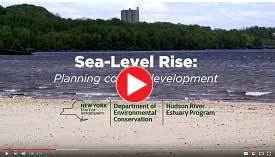Holiday lights, small communities, & clean heating/cooling funds
The New York State Department of Environmental Conservation sent this bulletin on 12/12/2017 10:38 AM EST |
| DEC Delivers - Information to keep you connected and informed from the NYS Department of Environmental Conservation |
| Share or view as a web page || Update preferences or unsubscribe |
News from the Office of Climate Change
|
Earth & Climate Photo Op
Yes, you can see it from space - NASA scientists have observed nighttime light intensity changes during major holiday seasons – Christmas and New Year's in the United States and the holy month of Ramadan in the Middle East. Things We LikeAn interesting blog post from Florida Light & Power provides an easy-to-follow breakdown of how holiday lights affect your energy cost. Using LED lights in your holiday display makes it safer, sturdier, longer-lasting and easier to install – not to mention, it will use 80-90% less energy than traditional incandescents, saving money (good for you!) and decreasing greenhouse gas emissions (good for us all!). Get HelpTo help policymakers understand, plan, and prepare for climate change impacts in rural areas and small communities, the Georgetown Climate Center has launched a new small communities sector in their Adaptation Clearinghouse. This new resource contains examples of plans, strategies, laws, and case studies showcasing adaptation efforts in small and rural communities, along with tools and guidance to help small communities understand their risks and prepare for impacts. The Clean Energy States Alliance (CESA), a national nonprofit coalition of public agencies and organizations working together to advance clean energy, has published a free distributed wind toolkit to help local governments and planning agencies facilitate the efficient and appropriate development of these small and medium-scale wind energy systems in their communities. The toolkit focuses on states in the Northeast and includes a model zoning ordinance and examples of distributed-wind-friendly ordinances and zoning regulations from across the region. Community News
The Climate Program at the Hudson River Estuary Program (HREP) has produced a short video - Sea-Level Rise: Planning coastal development - highlighting how the City of Kingston and residents of Piermont are adapting to sea-level rise and coastal flooding. The video reviews the causes of sea level rise and showcases the communities' positive approaches to adapting to this consequence of climate change. Learn more about flood-adaptive planning through HREP's climate resilience pages. Science!"'Most of the country is organized in such a way that it's really inconvenient to get around other than by private car,' said Guerra, an assistant professor in Penn Design. 'Marginal changes to the built environment in a lot of those places don't result in big changes in driving. For many parts of the country, reducing greenhouse gas emissions will really come down to cleaner vehicle technologies.'" -"To drop carbon dioxide emissions, look to local transportation and housing," published December 1, 2017 on ScienceDaily By the NumbersRegistered Climate Smart Communities...210 FundingNYSERDA's Clean Heating and Cooling Community Campaign initiative will bring together groups of potential customers to obtain discounts for air and ground source heat pumps, biomass heating and solar heating through aggregated purchases and a simplified procurement process. Community campaigns can be proposed by municipalities or community based organizations and will receive up to $150,000 for each campaign, with additional funds available for workforce development ($50,000) and low-to-moderate income engagement ($150,000) strategies. Community campaigns should be in a county, city, borough or region with at least 40,000 residents and are encouraged to include local financial institutions, colleges/universities and local utilities. EPA Clean Diesel Tribal Grants - $1.5 million - EPA’s Office of Transportation and Air Quality is seeking proposals for tribal projects that achieve significant reductions in diesel emissions and diesel emissions exposure, particularly from fleets in areas designated as having poor air quality. Priority for funding may be given to projects that result in outcomes that benefit affected communities, those that engage affected communities with respect to the design and performance of the project, and those that can demonstrate the ability to promote and continue efforts to reduce emissions after the project has ended. NOAA Environmental Literacy Grants - $2 million - This program supports the education of K-12 students and the public so they are knowledgeable of the ways in which their community can become more resilient to extreme weather events and/or other environmental hazards, and become involved in achieving that resilience. Many U.S. communities are increasingly contending with issues related to preventing, withstanding, and recovering from disruptions caused by extreme weather, such as severe storms, tornadoes, hurricanes, flooding, heavy precipitation events, persistent drought, heat waves, increased global temperatures, acidification of the ocean, and sea level rise. Education projects focused on resilience enable and empower community members, including children and youth, to protect themselves and their communities from these hazards. Contact Usclimatechange@dec.ny.gov |

